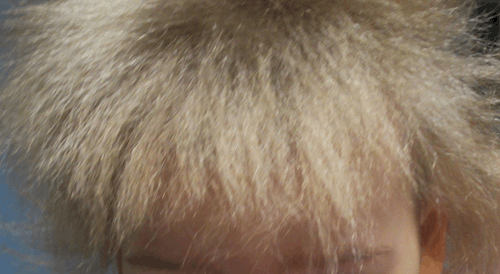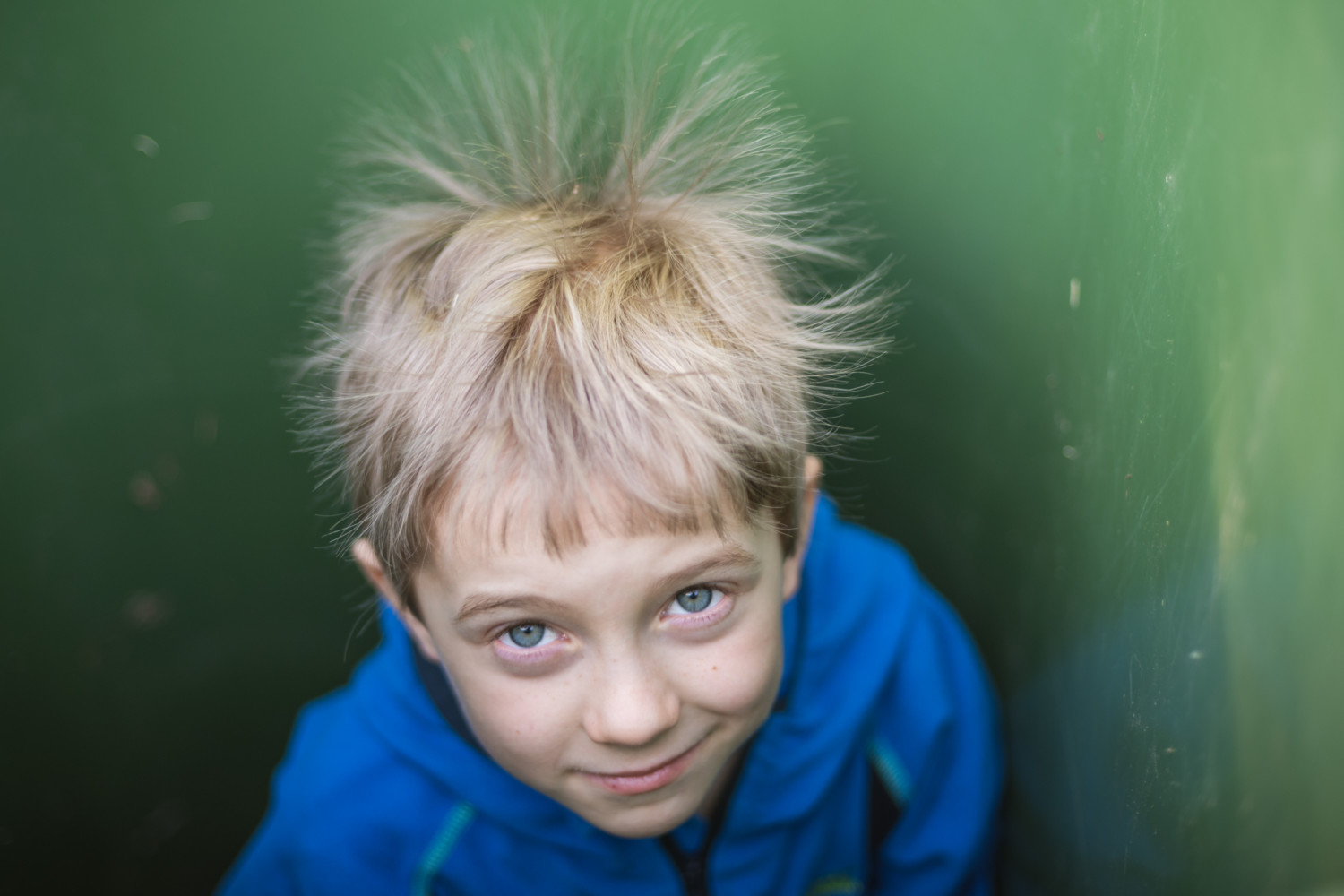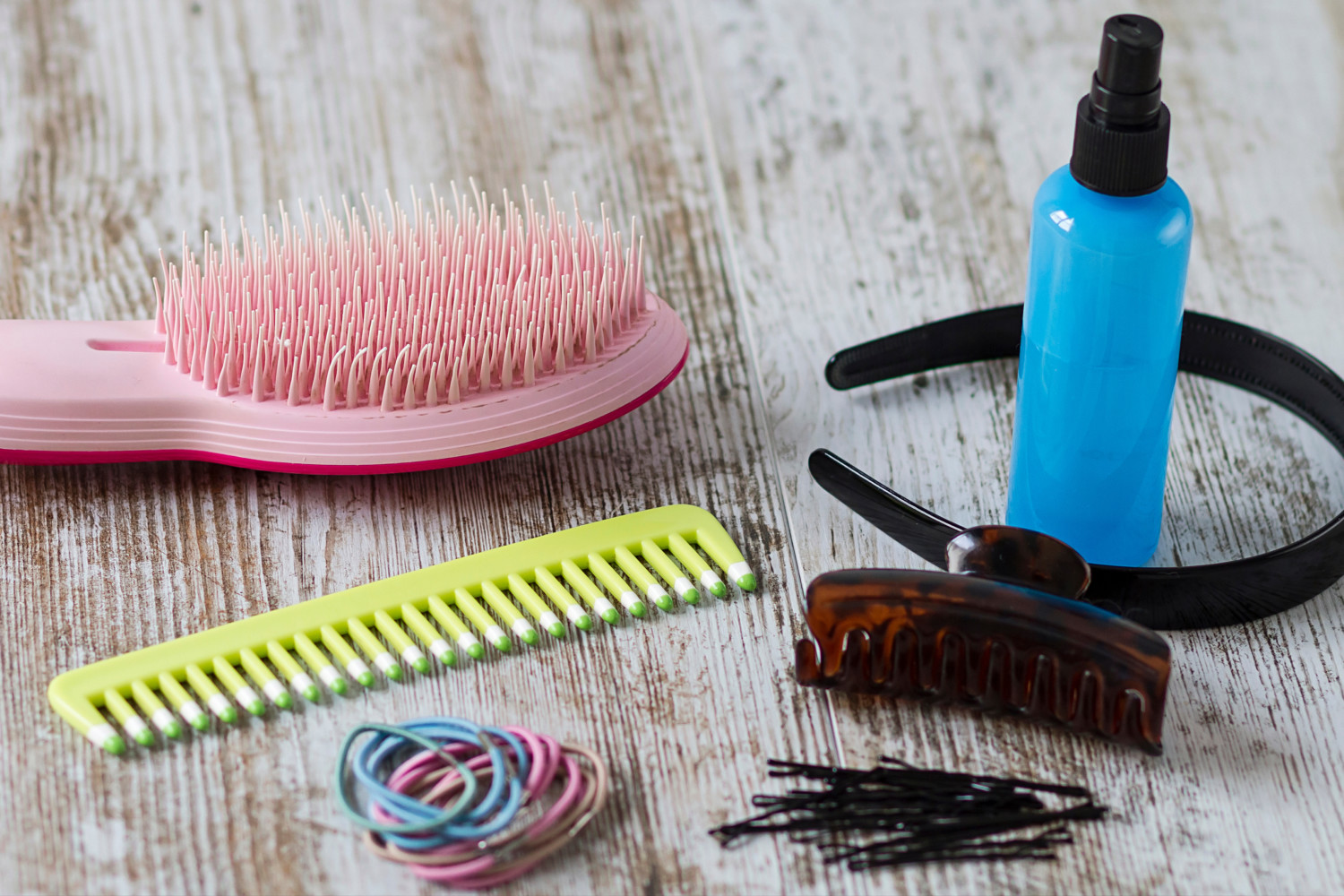Most parents have probably experienced trying to brush a child’s hair only to encounter a painfully tangled knot. Others have struggled to pat down a cowlick, trying to keep it in place. But for a Georgia toddler with uncombable hair syndrome, no detangler, hair gel or other product will tame his hair.
When Locklan Samples (affectionately known as Lock by family and friends) was born, he had typical baby hair like his older brother. That all changed when he was about six months old. Lock’s hair started to stand straight up and became difficult to wash.
“Then, as soon as we would dry it, it would not lay flat, even if we brushed it,” Lock’s mom Katelyn Samples told Fox 5 Atlanta. “As soon as it dries, it pops back up.”
Strangers often approached to comment on his soft, pale, dandelion-like tresses.
“It was coming in straight up and so soft and fuzzy,” Samples told The Mirror. “As it continued to grow, it never laid down … a lot of people who see him call him a baby chick.”
When someone reached out to ask if Lock had uncombable hair syndrome after seeing a photo of the toddler on social media, like this one on her Facebook page, Samples finally had some insight into what made her youngest child’s hair so unique.
“At first, you see ‘syndrome,’ and you’re like, ‘Oh my gosh,’ like is something wrong with my baby? Is he in pain or something?” Samples told “Good Morning America.” “I just went in a tailspin and did a Google deep dive, called his pediatrician, and the pediatrician even was like, ‘Hang on, let us look into this.’ They hadn’t even heard of it.”
The doctor sent the family to a pediatric dermatologist at Emory University in Atlanta. After taking samples and studying his hair, a pathologist confirmed that Lock has uncombable hair syndrome.
What Is Uncombable Hair Syndrome?
According to NORD, a nonprofit patient advocacy organization dedicated to individuals with rare diseases and the organizations that serve them, uncombable hair syndrome is also called UHS, pili trianguli et Canaliculi, Cheveux incoiffables, unmanageable hair syndrome and spun glass hair.
It is characterized by dry, frizzy hair that cannot be combed flat and is light, straw-colored or silvery with a glistening sheen. Instead of growing downward, hair strands grow out in multiple directions from the scalp. It grows at an average or slightly slower rate and is not fragile or brittle.
The condition most often develops between infancy and age 3. However, it can appear for the first time at any point before age 12 and usually improves over time. It is not dangerous as long as the child is developing normally, and most cases it appears to be isolated. However, it may be associated with more serious diseases, such as Bork syndrome, ectodermal dysplasias and Angel-shaped phalangoepiphyseal dysplasia.
While at least 100 cases of uncombable hair syndrome have been described in scientific literature, experts believe it is likely that more people who have had it went undiagnosed in childhood. There is a private Facebook group for people who have had the syndrome or are parents of children with uncombable hair syndrome with nearly 700 members.

Cause And Treatment Of Uncombable Hair Syndrome
Uncombable hair syndrome is caused by mutations in three genes, which provide instructions for making proteins that help structure hair strands. The genes involved, identified by scientists in 2016, basically malfunction and affect the stability and makeup of the hair. The parents of a child with this condition each carry one copy of a mutated gene and pass it down as a recessive, inherited trait. The parents do not typically show symptoms of uncombable hair syndrome themselves.
The mutations result in the shape of the hair shaft being altered, so the hair will not lie flat. In addition, the hair reflects light differently than normal hair, causing it to have a glistening sheen. At least 50% of hairs must be abnormal for UHS to be diagnosed.
Some people with uncombable hair syndrome do not have an identified genetic mutation. Therefore, the cause of the condition is unknown for these individuals.

Caring For Uncombable Hair
Many parents find their child’s hair relatively easy to care for if they have UHS. Uncombable hair is often too soft for brushing and styling, and doesn’t easily get wet. It is not without problems, though.
“It can get matted easily. It is very fragile,” Katelyn Samples told Good Morning America. “It can get tangled and I do have to be careful. That would be an example of a time I actually would wash it because I very rarely wash his hair. Just doesn’t need to be, it doesn’t really get greasy.”
Regular hair care can be painful for some children with uncombable hair syndrome.
“For school, I just grab it and stick it up in a bobble to keep it out of her way,” Charlotte Seymour, whose daughter Wynter was also diagnosed with the syndrome, told the Sun. “She does look a bit like a troll with it all in a ponytail. But doing anything else with it isn’t worth it. It’s too painful for her.”
The hair does get attention, though. Cara McGowan, whose daughter Taylor was diagnosed around 2018 when she was 17 months old, told SWNS TV that they are always stopped “nine or ten times” whenever they go shopping.
There is no treatment for uncombable hair syndrome. However, most children with uncombable hair syndrome outgrow it and have hair that lies flat and has normal texture by adolescence.

In the meantime, Katelyn is thankful that Lockland is healthy and is teaching her son to love his hair.
“I would say that 98% of people are so kind and love it,” she told People. “They say he’s like a little rock star. It brings a smile to peoples’ faces. And right now when he’s little, he loves the attention and doesn’t mind it. But with both of our kids, we want to teach them to be confident in who they are, no matter what makes them different. And that it’s cool to stand out a little bit.”
This story originally appeared on Simplemost. Checkout Simplemost for additional stories.


